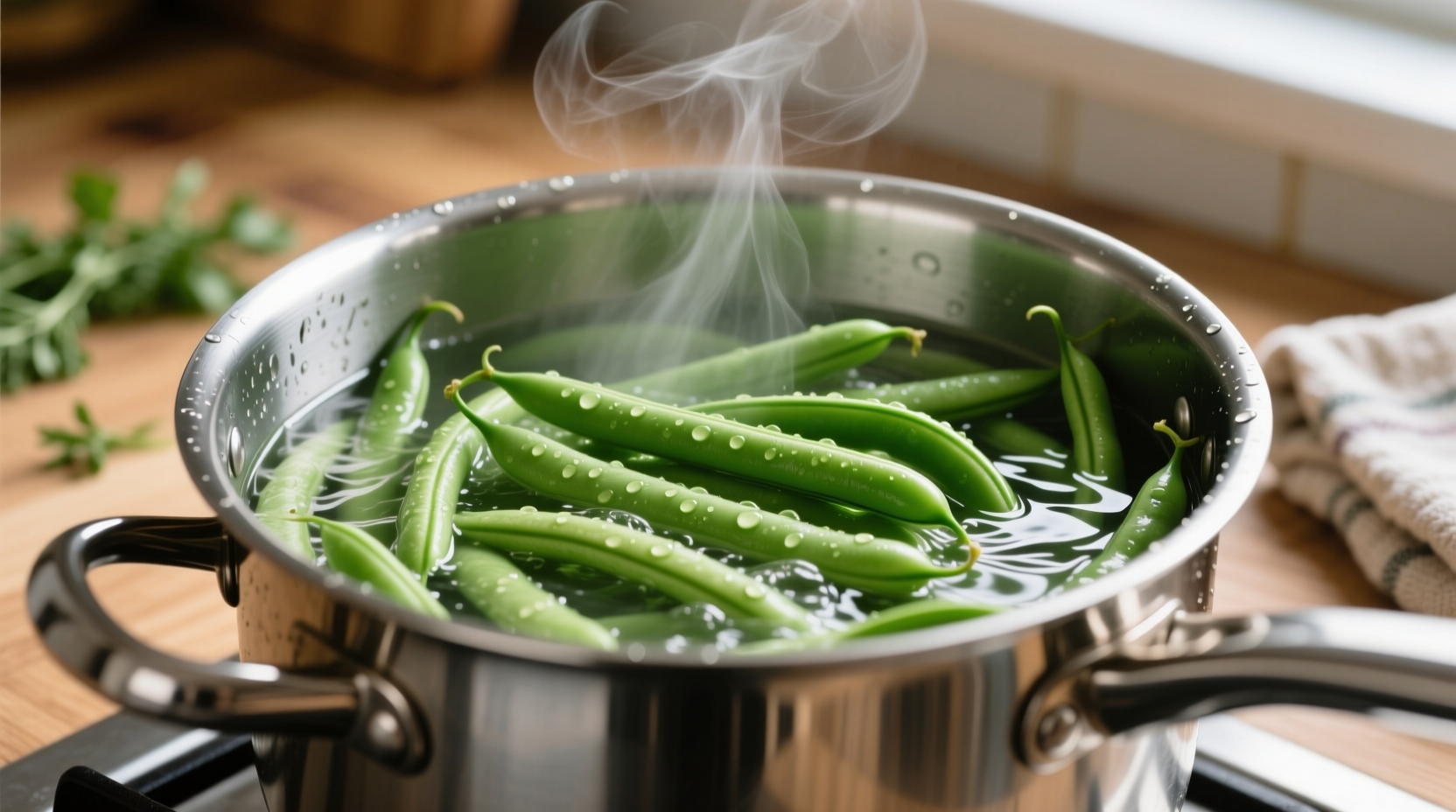Getting green beans just right on the stove seems simple, but timing makes all the difference between vibrant, flavorful vegetables and disappointing mush. Whether you're preparing a quick weeknight side or perfecting your holiday menu, understanding the exact cooking window transforms this humble vegetable into a standout dish.
Why Perfect Timing Matters for Stovetop Green Beans
Undercooked green beans remain unpleasantly crunchy with raw, grassy flavors. Overcooked beans turn soggy, lose their bright green color, and sacrifice valuable nutrients. The sweet spot? 7-10 minutes of boiling delivers that restaurant-quality crisp-tender texture where beans snap when bent but yield easily when bitten.
According to America's Test Kitchen research, green beans reach their peak texture at 8 minutes of boiling. Beyond this point, significant nutrient loss occurs—particularly water-soluble vitamins like vitamin C and B vitamins begin leaching into the cooking water. Their extensive testing with professional chefs confirmed that 10 minutes represents the absolute maximum before texture degradation becomes noticeable.
Your Step-by-Step Guide to Perfect Stovetop Green Beans
Follow this professional method for consistently excellent results:
- Prep your beans: Trim ends and remove strings from 1 pound fresh green beans
- Boil water: Fill a large pot with 4 quarts water, add 1½ tablespoons salt (creates 'seasoned boiling water')
- Heat to rolling boil: Wait for vigorous bubbles before adding beans
- Add beans: Submerge all beans at once, stir gently
- Set timer immediately: Begin counting from when beans hit the water
- Test at 7 minutes: Remove one bean, cool slightly, and taste
- Drain promptly: When beans reach desired tenderness (7-10 minutes), drain immediately
- Shock if desired: For extra vibrant color, plunge into ice water for 1 minute

Factors That Change Your Green Bean Cooking Time
Several variables affect the ideal stovetop cooking duration. Recognizing these helps you adjust for perfect results every time:
| Bean Characteristic | Recommended Cooking Time | Texture Result |
|---|---|---|
| Thin, young beans | 6-7 minutes | Crisp-tender with slight resistance |
| Standard mature beans | 8-9 minutes | Ideal snap with tender interior |
| Thick, meaty beans | 9-10 minutes | Firm but yielding texture |
| Older, tougher beans | 10-12 minutes | Softer texture (may lose vibrancy) |
Context Boundaries: When Standard Timing Needs Adjustment
While 7-10 minutes works for most situations, these specific conditions require timing modifications:
- High altitude cooking: Above 3,000 feet, add 1-2 minutes as water boils at lower temperatures
- Large batch cooking: When cooking more than 1 pound at once, add 1-2 minutes for even cooking
- Water-to-bean ratio: Less water than recommended requires slightly longer cooking (beans lower water temperature more)
- Post-cooking carryover: Beans continue cooking from residual heat for 1-2 minutes after draining
The USDA Food Safety and Inspection Service confirms that proper vegetable cooking times balance food safety with nutrient preservation. Their guidelines emphasize that brief boiling times like those for green beans maintain optimal nutritional value while ensuring any surface contaminants are eliminated.
Pro Techniques for Flavorful Green Beans
Elevate your basic boiled green beans with these chef-recommended methods:
- Season the water: Use 1½ tablespoons salt per quart of water—this seasons from within
- Add flavor boosters: Include garlic cloves, lemon slices, or herbs in the boiling water
- Finish with fat: Toss drained beans with 1 teaspoon olive oil or butter immediately
- Acid balance: A splash of vinegar or lemon juice after cooking brightens flavors
- Texture contrast: Add toasted almonds or pecans after cooking for crunch
Troubleshooting Common Green Bean Problems
Fix these frequent issues with simple solutions:
- Mushy beans: You've exceeded 10 minutes cooking time—next time test at 7 minutes
- Bland flavor: Increase salt in cooking water and finish with acid (lemon/vinegar)
- Dull color: Don't cover the pot while cooking and avoid overcooking
- Uneven cooking: Cut beans to uniform lengths before cooking
- Excess moisture: Drain thoroughly and return to warm pot for 30 seconds to evaporate water
Storing and Reheating Leftover Green Beans
Proper storage maintains texture and flavor:
- Refrigerate in airtight container for up to 4 days
- Do not store while still hot—cool to room temperature first
- Reheat gently in skillet with small amount of water or broth
- Avoid microwaving which makes beans soggy—use stovetop method instead
- Leftover beans work well in salads, soups, or as pizza topping
Frequently Asked Questions
Can I cook green beans faster by using less water?
Using less water actually slows cooking because the beans lower the water temperature more significantly. The recommended 4 quarts for 1 pound of beans maintains a proper rolling boil for even cooking. Reducing water leads to uneven results and potentially longer cooking times.
Should I cover the pot when boiling green beans?
Never cover green beans while boiling. Keeping the pot uncovered allows volatile acids to escape, preserving the vibrant green color. Covered cooking traps these compounds, causing beans to turn olive green and develop off-flavors.
How do I know when green beans are done without tasting?
Visual and tactile cues indicate doneness: beans should appear bright green and feel slightly tender when pierced with a fork, but still maintain their shape. They should bend slightly before snapping when tested. The cooking water will also become noticeably clearer as beans finish cooking.
Do I need to add salt to the cooking water?
Yes, salting the water (1½ tablespoons per quart) is essential. It seasons the beans from within and helps maintain cell structure for better texture. Contrary to popular belief, salted water doesn't make beans cook faster but significantly improves flavor penetration.
Can I cook frozen green beans on the stove?
Yes, but adjust timing: frozen green beans need 6-8 minutes of boiling. Do not thaw first—add directly to boiling water. Frozen beans cook slightly faster than fresh because the freezing process breaks down cell walls. Check for doneness starting at 5 minutes to prevent overcooking.











 浙公网安备
33010002000092号
浙公网安备
33010002000092号 浙B2-20120091-4
浙B2-20120091-4